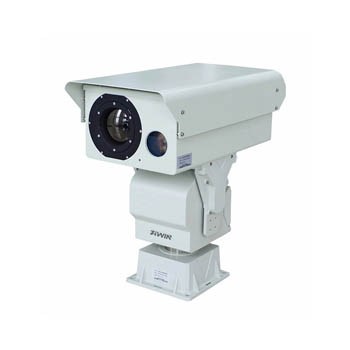
Dual Sensor Thermal Cameras combine thermal imaging (infrared) and visible light technologies, offering significant value in security applications. Their core advantage lies in multispectral data fusion, overcoming the limitations of single-sensor systems and greatly enhancing environmental adaptability and target recognition capabilities. Below are their key applications and technical features.
Zero-Light Monitoring: Thermal imaging detects human or vehicle heat signatures in complete darkness, fog, or smoke, while visible light provides details (e.g., clothing color, license plates).
Border/Perimeter Protection: Used in sensitive areas like military bases and airports, thermal imaging identifies concealed intruders (e.g., hidden in grass), with visible light aiding target verification.
Early Fire Warning: Thermal imaging detects overheating electrical equipment or abnormal heat buildup in warehouses, while visible light pinpoints fire locations for firefighting systems.
Industrial Facility Monitoring: Real-time temperature monitoring in high-risk areas like chemical plants and oil depots.
Crowded Areas: Thermal imaging quickly flags suspicious objects (e.g., unattended bags with abnormal heat), while visible light supports facial recognition.
Drone Patrols: Dual-sensor cameras mounted on drones inspect power facilities or secure large events at night.
Traffic Flow Analysis: Thermal imaging counts vehicles, while visible light captures violations (e.g., license plate recognition).
Epidemic Control: Contactless temperature screening in public spaces (with blackbody calibration), paired with visible light for identity recording.
Image Overlay: Combines thermal temperature distribution with visible light details (e.g., FLIR’s MSX technology) for enhanced readability.
AI Analytics: Deep learning algorithms enable behavior analysis (e.g., climbing, loitering) and temperature-triggered alarms.
Strong Penetration: Thermal imaging works through light fog and dust, while visible light provides high-definition images in clear conditions.
Anti-Interference: Reduces false alarms (e.g., distinguishing animals from humans via thermal imaging, eliminating shadows with visible light).
Thermal imaging requires no additional lighting, avoiding exposure of monitoring positions—ideal for counter-reconnaissance.
FLIR Duo Pro Series: Widely used in forest fire prevention and power inspections, supports RTSP streaming for security platforms.
Hikvision Dual-Sensor PTZ Cameras: Deployed in smart city projects for 24/7 road monitoring, with customizable temperature alerts.
Military Applications: Israel’s military uses dual-sensor systems for border wall surveillance, integrating AI to detect intrusions.
Cost Issues: High-end dual-sensor systems remain expensive, but domestic production (e.g., Guide Infrared) is driving affordability.
Algorithm Optimization: Real-time multispectral fusion demands high computing power, with edge computing (e.g., Huawei Atlas) emerging as a solution.
Future Directions: Integration with 5G and AR (e.g., AR situational displays in command centers) or expanded functions like multi-gas detection.
Dual Sensor Thermal Cameras provide "temperature + visual" dual-layer data, addressing blind spots in traditional security systems under low-light and complex conditions. They are particularly valuable for preventive security (e.g., fire and intrusion warnings) and emergency response. With advancements in AIoT, they are becoming a standard in intelligent security systems.